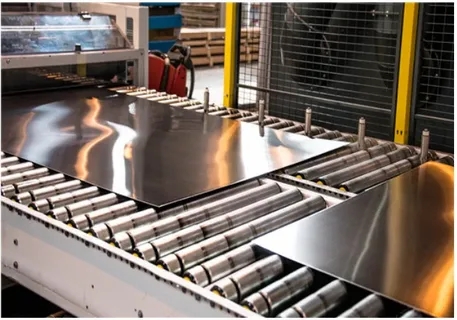The Versatility and Durability of Stainless Steel 304 Plates
One of the most popular materials used in manufacturing and construction today is stainless steel 304. This versatile metal is highly valued for its strength, corrosion resistance, and ease of fabrication. In particular, stainless steel 304 plates are highly sought-after in various industries due to their excellent properties. If you're curious about the benefits of stainless steel 304 plates and how they are used, keep reading to learn more.
1. What is stainless steel 304?
Stainless steel 304 is an alloy of iron, carbon, and up to 20% chromium. It also contains nickel and other trace elements that improve its mechanical and chemical properties. The result is a material that is tough, pliable, and resistant to rust and corrosion, making it ideal for a wide range of applications.
2. Versatility of stainless steel 304 plates:
The applications of stainless steel 304 plates are vast; they are used for making equipment for various industries such as Food Processing, Chemical, Oil and Gas, Pharma, and Petrochemical. This is due to its high resistance to corrosion and erosion, which makes it ideal for harsh environments. Its longevity, durability, and ease of maintenance make it a top choice for construction, architecture, and furniture.
3. The fabrication and finish of stainless steel 304 plates:
Stainless steel 304 plates can be shaped and formed by various methods to create intricate parts and components. The plates are available in multiple thicknesses, widths, and lengths, making them versatile for various applications. Additionally, the surface finish of stainless steel 304 plates can be customized to meet the requirements of different applications, such as brushed, mirror-polished, or satin-polished finishes.
4. Maintenance of stainless steel 304 plates:
Despite its durability, stainless steel 304 plates still require maintenance to ensure optimum performance and longevity. Cleaning and polishing the plates regularly is essential to maintain their aesthetic appeal, and proper storage and handling can ensure that the plates remain free from damage. Regular maintenance will also help to prevent corrosion, which can compromise the material's strength and longevity.
5. The cost-effectiveness of stainless steel 304 plates:
Although stainless steel 304 plates may be more expensive upfront, they are a cost-effective choice in the long run. Stainless steel 304 plates are highly durable and require minimal maintenance, which reduces the need for repair and replacement. The plates also retain value, making them an ideal investment for any industry.
Conclusion:
Stainless steel 304 plates are a versatile and durable material highly valued in various industries. It provides exceptional resistance to corrosion and erosion, making it ideal for harsh environments. The plates can be customized in multiple thicknesses, widths, and finishes according to the requirements of different applications, making it an excellent choice for equipment, construction, and furniture. Additionally, stainless steel 304 plates are cost-effective, highly durable, and require minimal maintenance, making them an ideal investment choice. For those searching for the best material that combines quality and durability, stainless steel 304 plates are an excellent choice.








Comments
Post a Comment